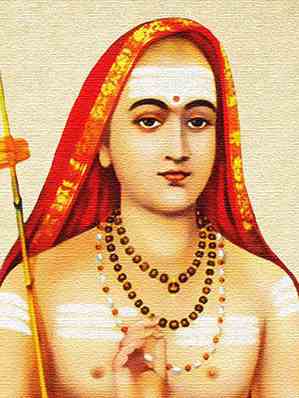SelfDefinition.Org
Parameshwar Maharaj
Submerging into Myself
Advaita in Practice
Please send suggestions to improve this translation to [email protected]

Foreword
Español: ../hundiendome/prologo.htm
The author describes in this book the different states of consciousness through which the searcher has to go, from the beginning of the search, as soon as the ego or personality feels the call, to the highest states of consciousness that can be reached in this our life
The result of his own experience, and by the hand of the one who has been and will always be his Teacher, Parameshwar, the author makes a compilation of the teachings of the latter, and approaches the Way of the Being—not circumscribed to any particular tradition because it goes beyond what can be named—from the practice of Advaita.
Parameshwar, of Hindu birth, having partaken of the Advaita tradition, sometimes uses its language to denominate certain states of consciousness; but he distances himself from it in that his transmission is done with words specific to each one of us; because Being is oneself and it is a futile attempt to seek it if it is not from one's own intimate experience. Because what is more intimate and close than one's own interior? Trying to describe these states is a difficult task because the experience is incommunicable if it is not experienced. Words like Atman or Self point to the state of Turya, that state where the "I Am", by removing one from the center, becomes the Being common to all but which is only accessible through inner experience of oneself. And that, according to the teachings of Parameshwar, is the beginning of the whole Universe. The word Turyatita is used to designate not just the Being but the Highest state of consciousness where He is absorbed by the Pure Consciousness.
Thus, we find that the Being is the one, the beginning of the existence of the Universe as we perceive it, and that beyond there is a plane of the Absolute, that of Silence in capitals, that of the Great Mystery, where the mind does not have access and the senses remain, but are of no use. And that is the source from which we all and everything emerge, and where we have to return and submerge. That return to the source is only possible through sinking in oneself. Throughout the journey, from its beginning to the end, it is an indispensable condition that each one sink into himself because everything that can be found is inside.
Parameshwar is indeed a great teacher, but not only of Advaita, because having drunk from his sources and knowing his tradition like the palm of his hand, he was not circumscribed by it, because the Way of Being does not accommodate dogmas, but what it is about is the honest and tenacious search, self-inquiry and experience.
Parameshwar, like other great masters, urges us to "get inside ourselves" and pour, [or translate] through the author, the fruit of his experience in his teachings. Its very title, Submerging Into Myself, gives an idea that it is not a philosophical treatise but that its basis is "in daily practice". That is why we are given a detailed map, indicating all the intermediate stages – from the beginning of the journey, in which the ego, unconscious of itself, begins on the path to the highest level, where it is absorbed by the original source. We are also given a couple of practical exercises. As we are told in the book, the important thing is daily practice, in addition to meditation. This is to avoid dreaming that we are going somewhere when we have not moved from the chair. That is why Parameshwar repeats that the important thing is to try to bring the state of self-consciousness into practice by interacting with the world on a daily basis.
The book has been created from a few talks where the few disciples who knew Parameshwar were lucky to hear it, and where they could exercise their practice by meditation, so it does not follow a pattern in which the neophyte begins and follows an orderly and ascending route, but is sprinkled by themes according to the questions that were asked.
I also want to warn that it is not a book to read quickly, but rather a book to draw out knowledge, to learn, and to help different seekers in the different stages of their journey. In fact, there are practical exercises for those who want to start; it can also resolve questions, if read carefully, for practitioners who have been stuck on some point.
With my best wishes for all the readers and for their author.
Dolores Vela, Traveller.